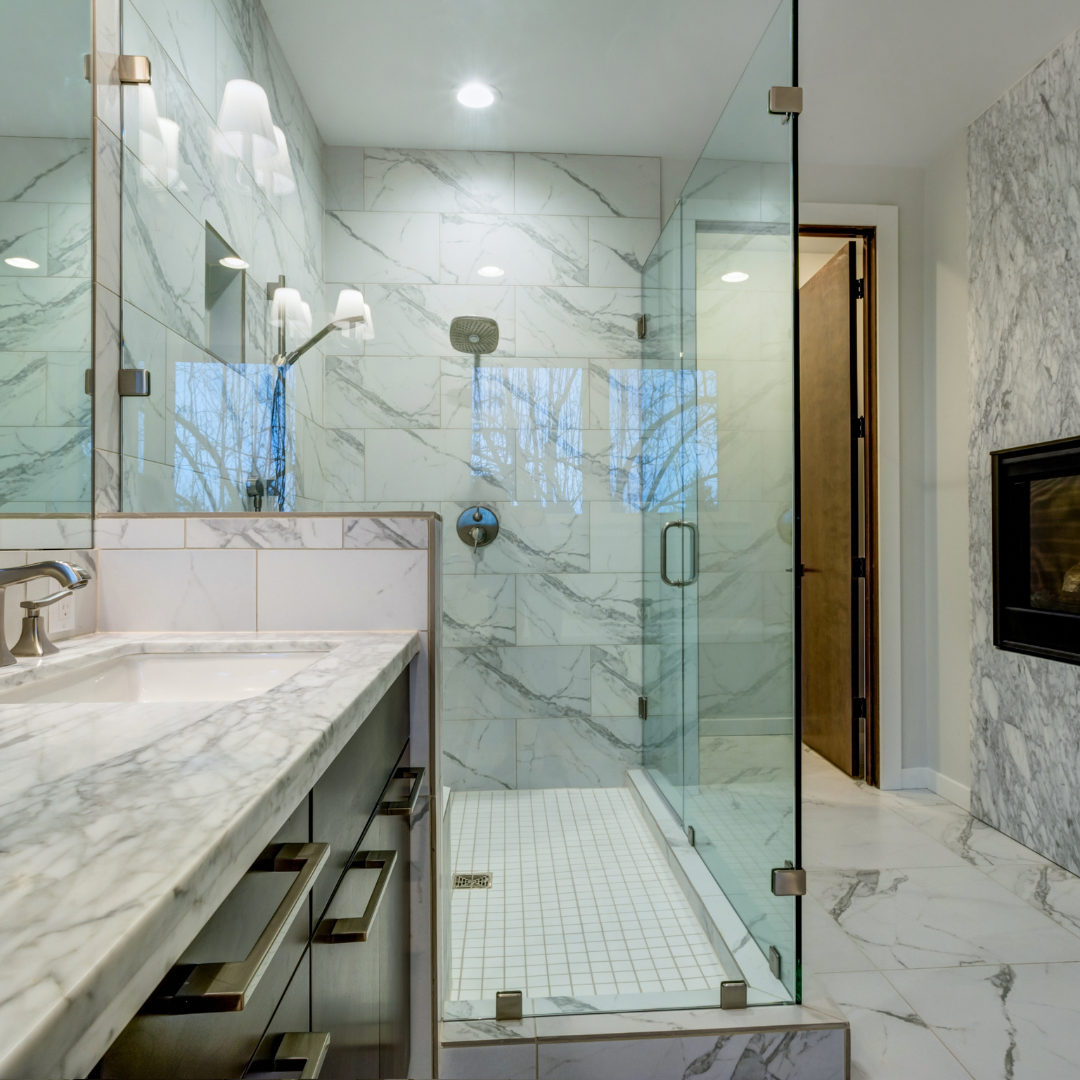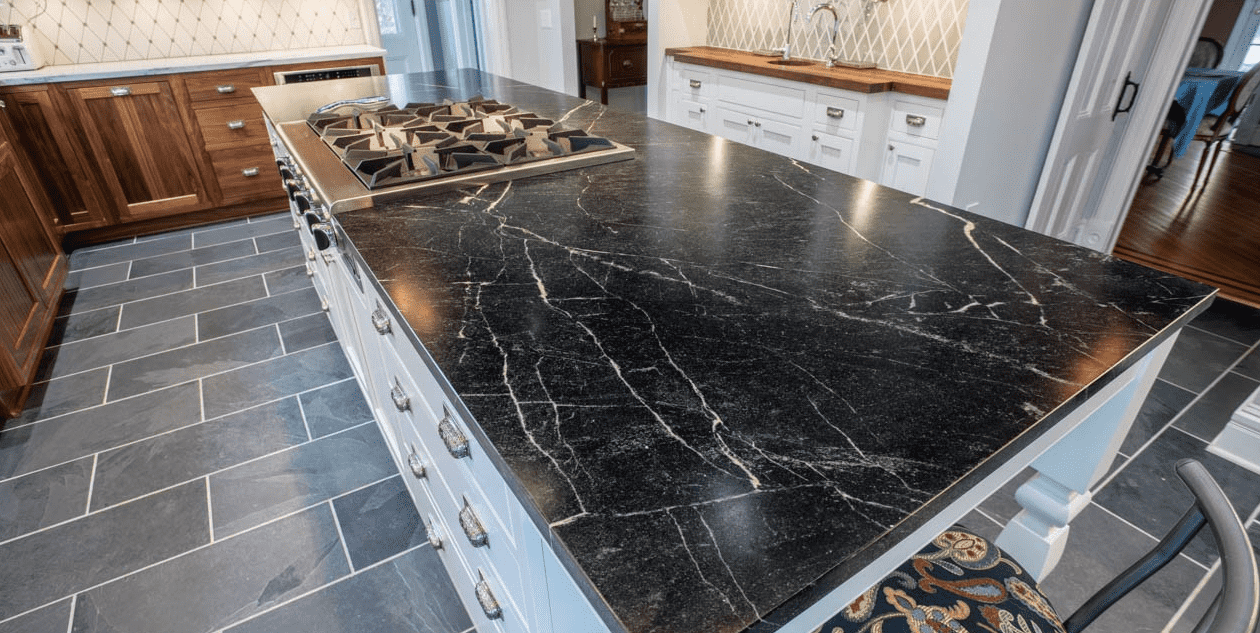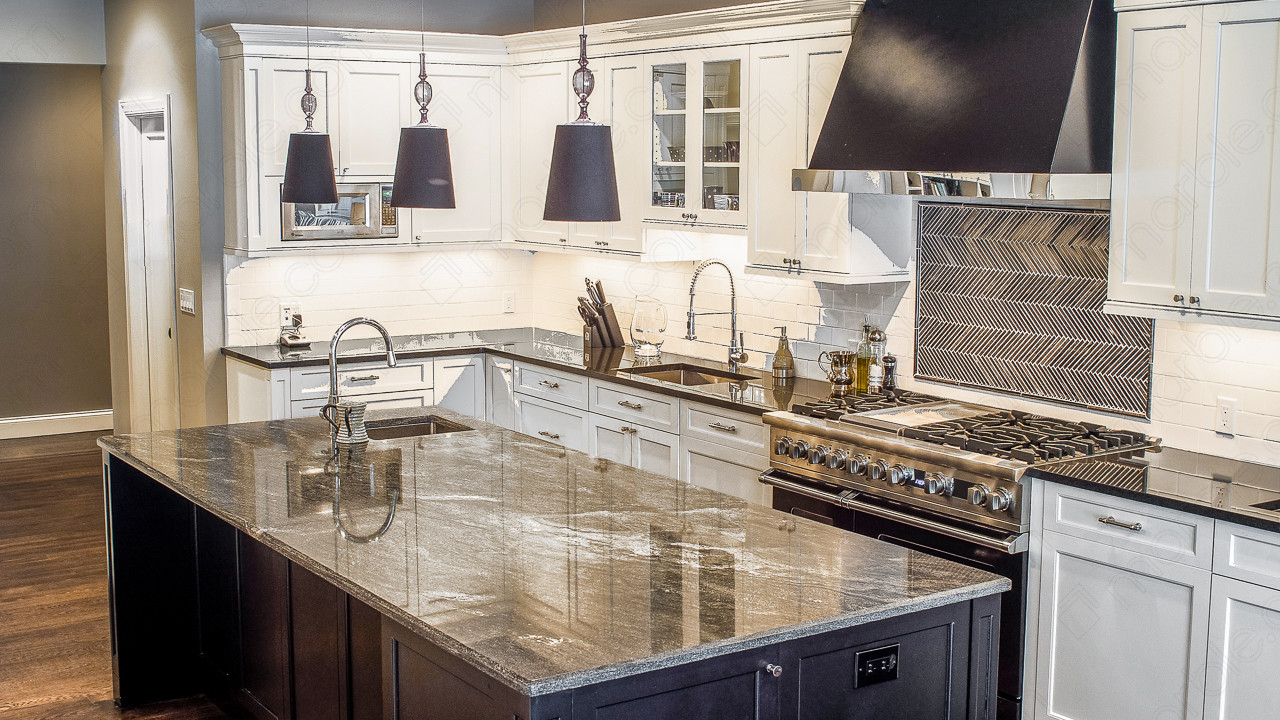Table of Contents

Marble is a luxurious stone that is often incorporated in kitchens, but has been known to work equally well in bathrooms as countertop and vanity material. The popular color of white marble is a classic design which fits well for any style of interior decoration.
Marble stone is very soft and porous, so it will need special attention when cleaning it. Before you pull out the heavy cleaning supplies and scrubbing brush, reconsider something lighter to keep your marble stone in a healthy condition. Follow our guide to learn how to effectively clean marble countertops in bathrooms.
Marble Pros and Cons
Marble stone is a stone material suited for decoration more than building material. In comparison to granite or quartz, marble is very delicate and has a lower hardness rating. According to the Mohs hardness scale, marble has a hardness of 4 out of 10. For reference, diamond is the hardest substance on Earth, with a hardness level of 10 out of 10. Due to the more delicate composition, marble can be easily scratched, stained, and chipped.
Marble stone is very porous by nature. The stone has grooves, divots, and pores in it called pitting, which allows dirt, chemicals, and bacteria to settle within the stone. Harsh chemicals lodged in the pitting can cause marble stone to fade and stain, while bacteria or acidic liquids can cause the stone to erode and form cracks.
Knowing marble’s limits does not make it inadequate for interior design. Marble stone is highly coveted due to its long history of being used in high society throughout history. The white stone base is an immediate hit with interior design schemes and modern home design trends where homeowners want something clean and simple.
Installing marble in the bathroom is an excellent choice as there is less risk of cutting or scratching it on sharp objects. The key issues homeowners must be attentive to are routine cleaning, hard water stains, and possible burn marks.
[get_quote]
Cleaning Guide for Bathroom Marble
Cleaning marble countertops in the bathroom is practically the same as cleaning kitchen marble countertops. Marble should not be cleaned with strong chemicals like bleach or ammonia, as they can dull or damage the stone very quickly. To effectively clean marble, practice the following methods.
Routine Cleaning
Routine cleanings should be done every day or whenever there is a mess on the countertop or vanity.
Materials
|
Items Required |
Explanation |
|
Warm Water |
Warm water is easier to clean with countertops and safer for countertops as too hot or too cold temperatures can lead to risks of thermal shock. |
|
Mild Dish Soap |
Mild dish soap is softer than regular dish soap with gentler cleaning agents. |
|
Microfiber Cloth |
Microfiber cloths are more absorbent and softer than regular washcloths. These have less chance of fading the stone polish. |
|
Separate Dry Towel |
Absorb excess water after cleaning to minimize the chance of water stains forming. |
|
Marble Specific Cleaner |
Cleaning agents designed by marble companies to clean marble countertops. |
Routine Cleaning Guide
1. Mix the mild dish soap with the warm water.
2. Dip the microfiber cloth into the soapy water. Wring out excess water to not dribble on the countertop or floor.
3. Gently wipe down marble vanity with wet microfiber cloth.
4. Rinse thoroughly with warm water to remove any residue soap bubbles.
5. Use a separate dry towel to soak up remaining water droplets to avoid water stains.
When using a marble specific cleaner, follow the instructions on the bottle for routine care.
Cleaning your countertop every day should keep them shining and healthy.
Removing Hard Water Stains
Hard water stains (aka mineral stains) form when water evaporates from a surface, leaving behind hard mineral deposits carried by the water. These mineral deposits stick to the countertop surface, forming small, white stains which can be difficult to remove. Hard water stains can form at any time as nearly all sources of water contain miniscule amounts of minerals.
To remove hard water stains, try using the routine cleaning method first to try, while applying a small amount of pressure to rub the minerals away.
If that fails, proceed with the next strategy.
Materials
|
Items Required |
Explanation |
|
Warm Water |
Warm water is easier to clean with countertops and safer for countertops as too hot or too cold temperatures can lead to risks of thermal shock. |
|
Mild Dish Soap |
Mild dish soap is softer than regular dish soap with gentler cleaning agents. |
|
Microfiber Cloth |
Microfiber cloths are more absorbent and softer than regular washcloths. These have less chance of fading the stone polish. |
|
Separate Dry Cloth |
Absorb excess water after cleaning to minimize the chance of water stains forming. |
|
Soft Bristle Brush |
A soft bristle brush is delicate enough to not harm marble, but strong enough to remove mineral deposits with gentle pressure. |
|
0000 Steel Wool |
Very fine steel wool helps directly remove mineral deposits but may cause etching if used too hard. Apply gentle pressure when in use. |
|
Baking Soda |
A less abrasive cleaning agent to chemically remove mineral deposits and chemical stains. |
Hard Water Stain Cleaning Guide
1. Perform a routine cleaning guide before trying the next steps.
2. If the stain remains after using the microfiber cloth, use the soft bristle brush to gently scrub the affected area.
3. If the stain remains, gently scrub with the 0000-steel wool, delicately scouring the countertop so as not to etch the surface.
4. If the stain remains, clean off the vanity until dry, then sprinkle baking soda on the affected area.
5. Use a damp cloth and rub in a circulation motion to move the baking soda into the countertop.
6. Rinse aware area with warm water to see if stain has been removed
7. Once the stain has successfully been scrubbed away, wash once more with warm water and mild dish soap to remove excess mineral debris.
8. Thoroughly rinse the vanity with warm water, removing any soap residue and mineral debris.
9. Dry with separate cloth to absorb remaining water droplets so as not to form new water stains.
If etching occurred when using the bristle brush or 0000 steel wool, purchase a polishing agent from the marble manufacturer to restore its shine.
Removing Burn Damage
Marble countertops can resist heat well, but it can still be burned if a constant high heat source is directly touching the surface. Common items like curling irons operate at a consistent high temperature with metal, and placing it directly can cause marble to form burn marks.
Burn damage is more difficult to remove than regular stains, as it depends on how severe the burn is and how deep is the burn with the stone.
Materials
|
Items Required |
Explanation |
|
Warm Water |
Warm water is easier to clean with countertops and safer for countertops as too hot or too cold temperatures can lead to risks of thermal shock. |
|
Mild Dish Soap |
Mild dish soap is softer than regular dish soap with gentler cleaning agents. |
|
Microfiber Cloth |
Microfiber cloths are more absorbent and softer than regular washcloths. These have less chance of fading the stone polish. |
|
Soft Bristle Brush |
A soft bristle brush is delicate enough to not harm marble, but strong enough to remove mineral deposits with gentle pressure. |
|
Bucket |
Used to mix warm water with stronger cleaning chemicals. |
|
Bleach |
Typically, ill advised to use on marble, but when diluted with warm water, can be used to remove burn stains. Should NOT be used on dark colored marble. |
|
Gloves |
To protect your hands while using diluted chemicals. |
|
Marble Warranty / Manual |
In case of deep burns. |
Burn Mark Cleaning Guide
1. Try cleaning the burn mark with the routine cleaning method first of warm water and a mild dish soap.
2. Fill a bucket with warm water and add in a very small amount of bleach. Keep a water to bleach ratio of 8:1 cups.
3. While wearing gloves, dip the cloth into the diluted bleach and wring out any excess liquid to not spill on the countertop or floor.
4. Use the damp cloth to gently wipe the burned area.
5. Repeat until the burn mark is completely gone.
6. Thoroughly since vanity with warm water.
7. Use a separate dry cloth to completely dry the countertop.
Warning while using this method, bleach can stain marble countertops very easily. Even diluted bleach can stain dark colored marble or cause the shine to fade and look dull.
In the event where the burn mark remains, that means the burn has seeped deeper into the marble stone and the best option to remove it is completely replacing the countertop. Check the warranty for the countertop to see if the company has coverage for burn marks and see if you can get a replacement.

Tips to Keep Bathroom Clean
In order for your marble countertops to remain clean for a long time, follow these helpful tips for general care and maintenance.
1. Always make sure the countertop is completely dry to avoid hard water stains from forming.
2. Do not leave a curling iron or any other hot objects directly on the countertop surface.
3. Clean the countertop regularly with gentle cleaning chemicals while avoiding harsh chemicals like ammonia, bleach, and vinegar.
4. Do not place objects, bathroom toiletries and amenities directly on the countertop. Use a tray to hold these objects like toothbrush, toothpaste, soap, shampoo, hand towels, etc., so they do not drip water onto the surface.
Conclusion
Marble is a great material for decoration, but great care must be taken when installing it as countertop material. However, marble can also be used as bathroom wall tile, flooring, and bathroom backsplash material; so if you really want marble in your bathroom, there are plenty of options. If you are set on a marble countertop in your bathroom, follow our guides to make sure it is cleaned and maintained properly so it can be with you for a lifetime.
















 The article helped me immensely
The article helped me immensely
 I’m now more informed on the subject
I’m now more informed on the subject
 I have questions about Marble.com
I have questions about Marble.com
 The article was not accurate at all
The article was not accurate at all
 There is a serious lack of information
There is a serious lack of information
 I have questions about Marble.com
I have questions about Marble.com